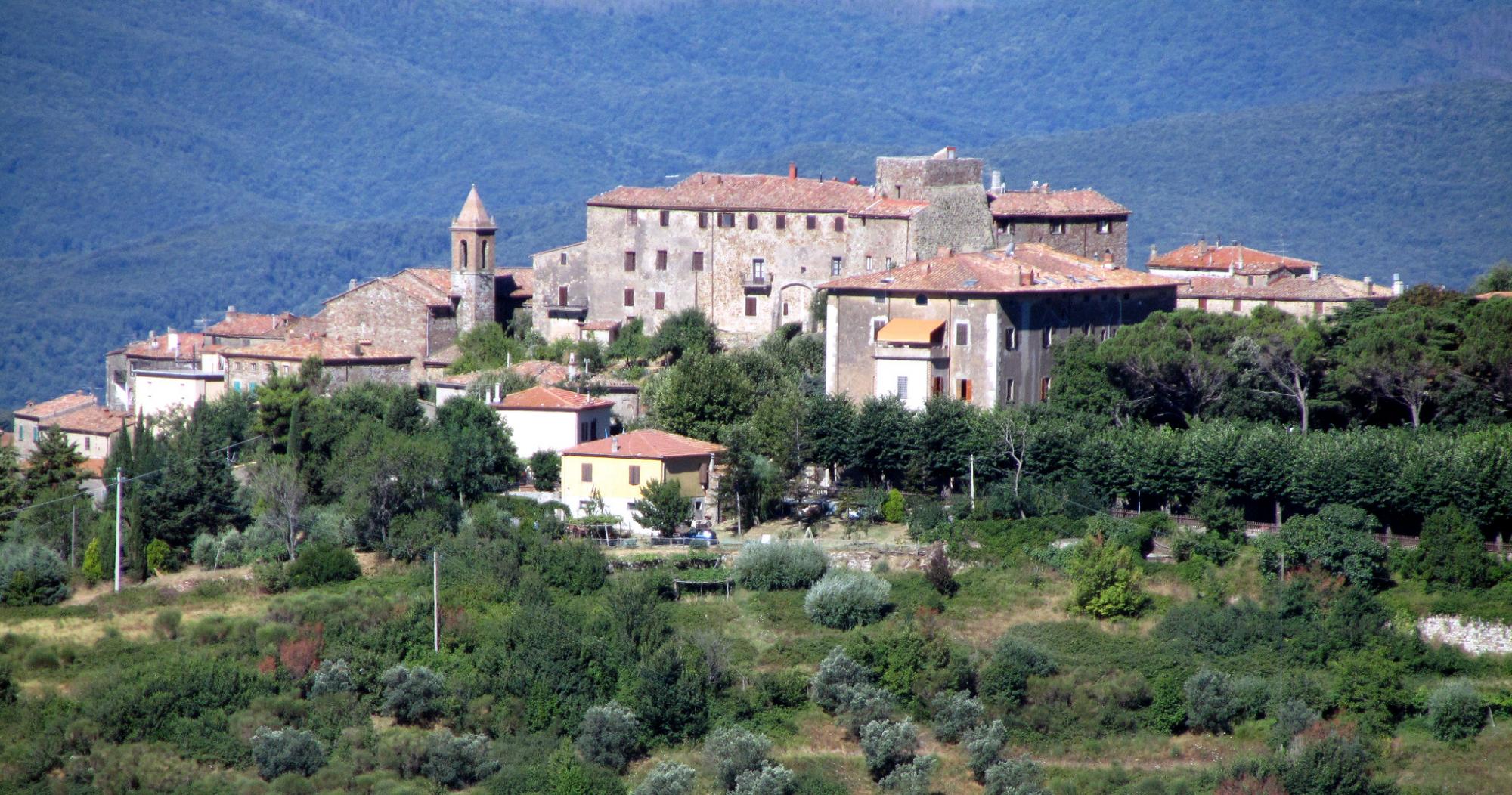
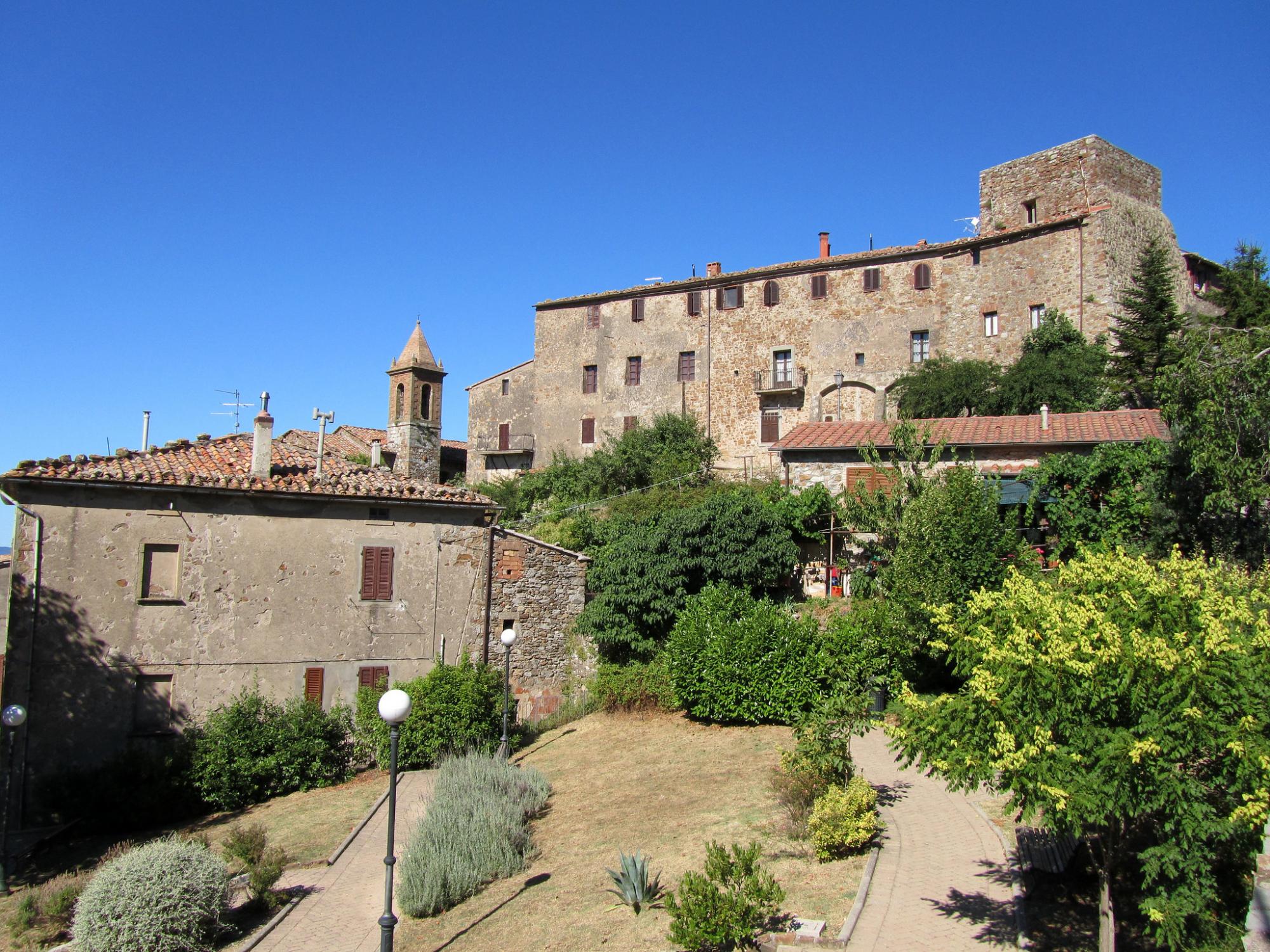
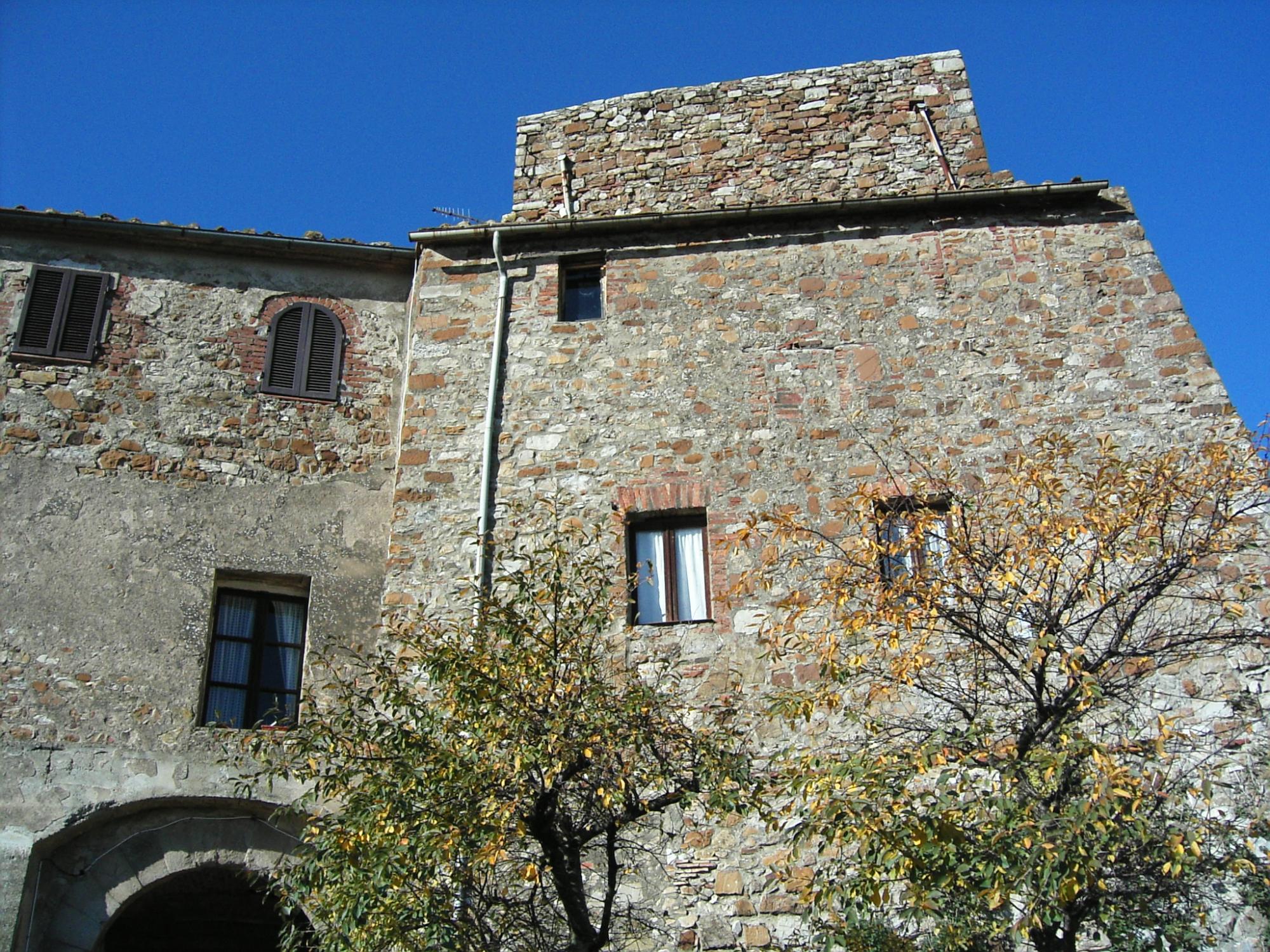
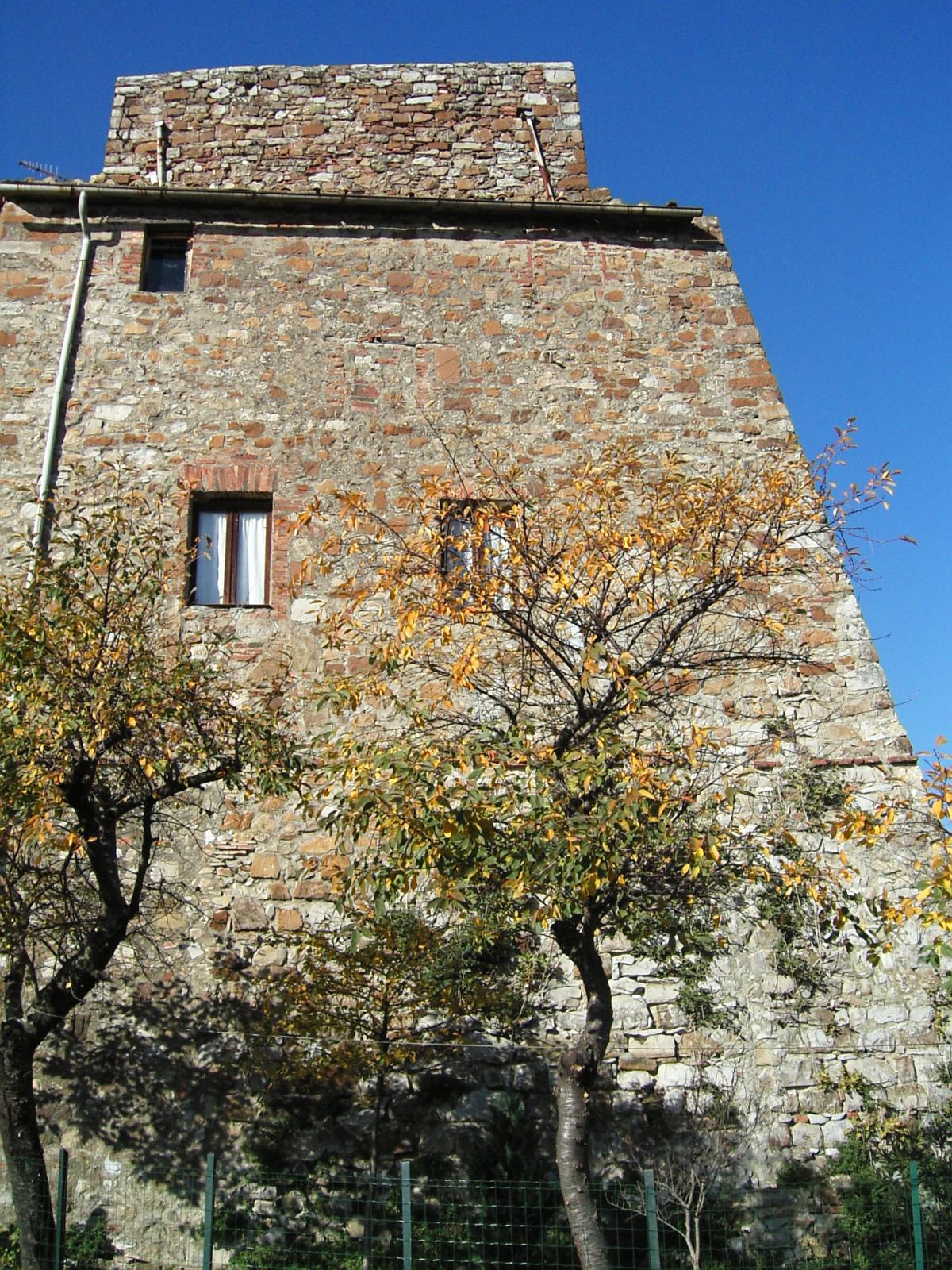
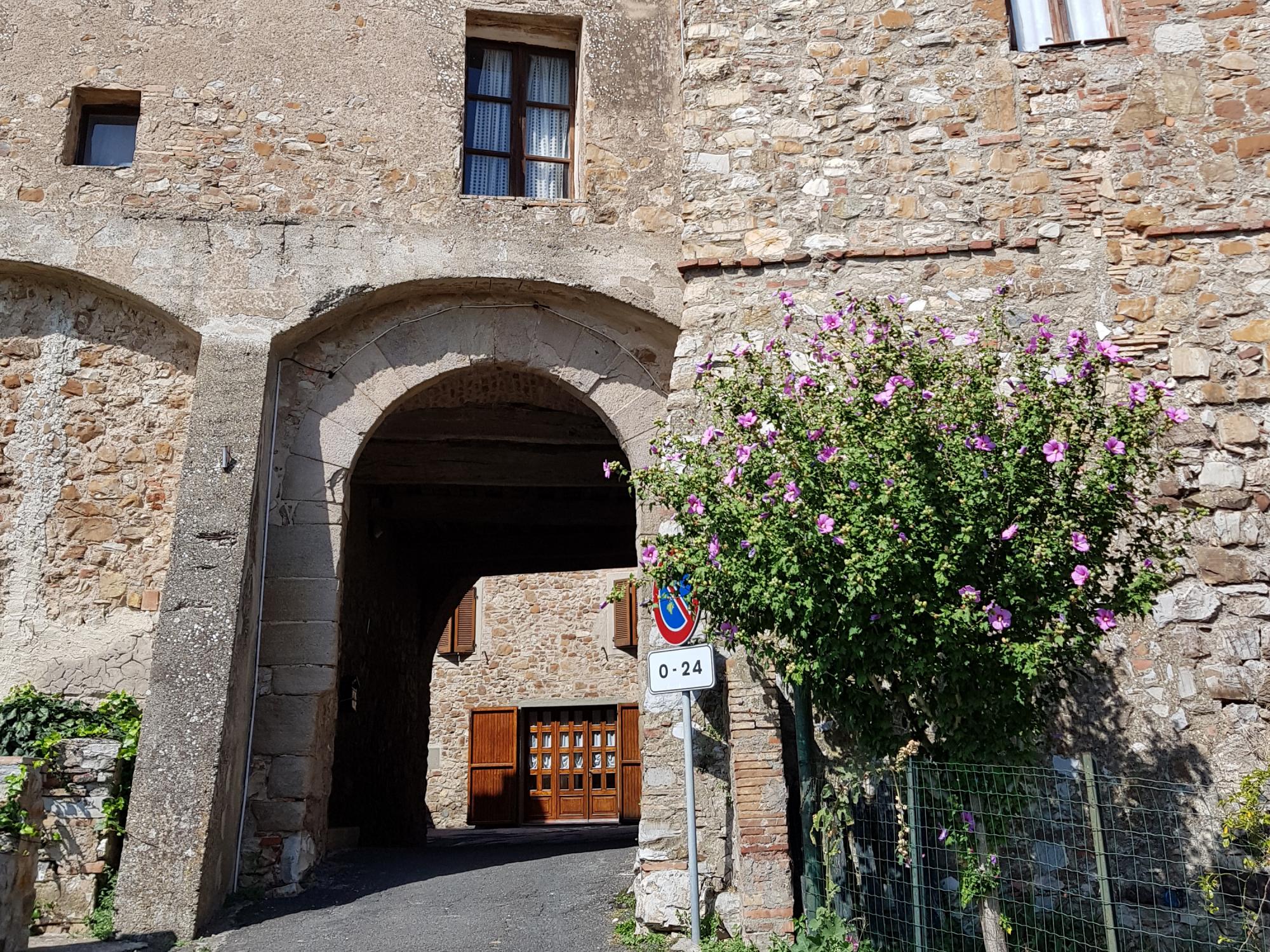
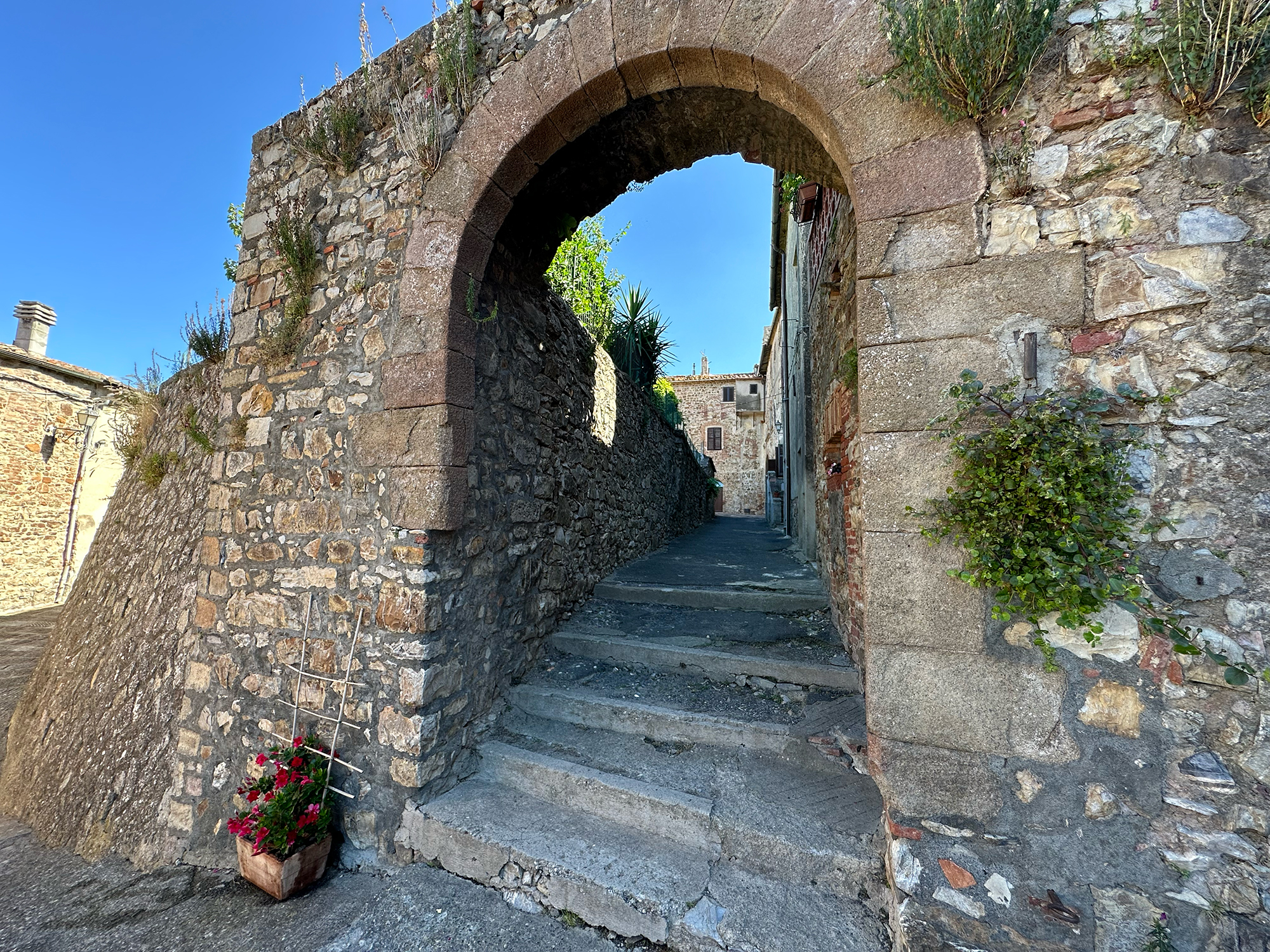
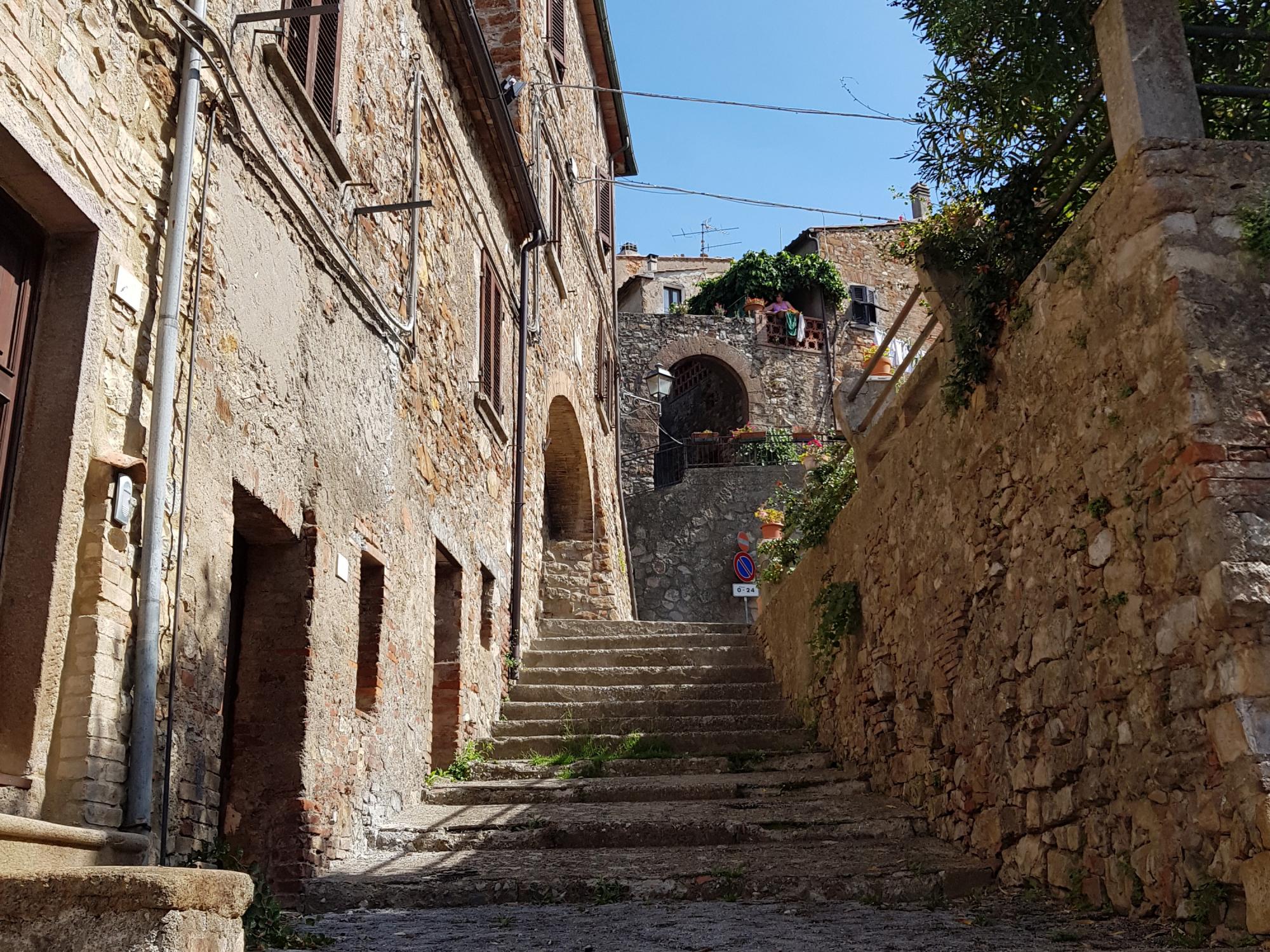
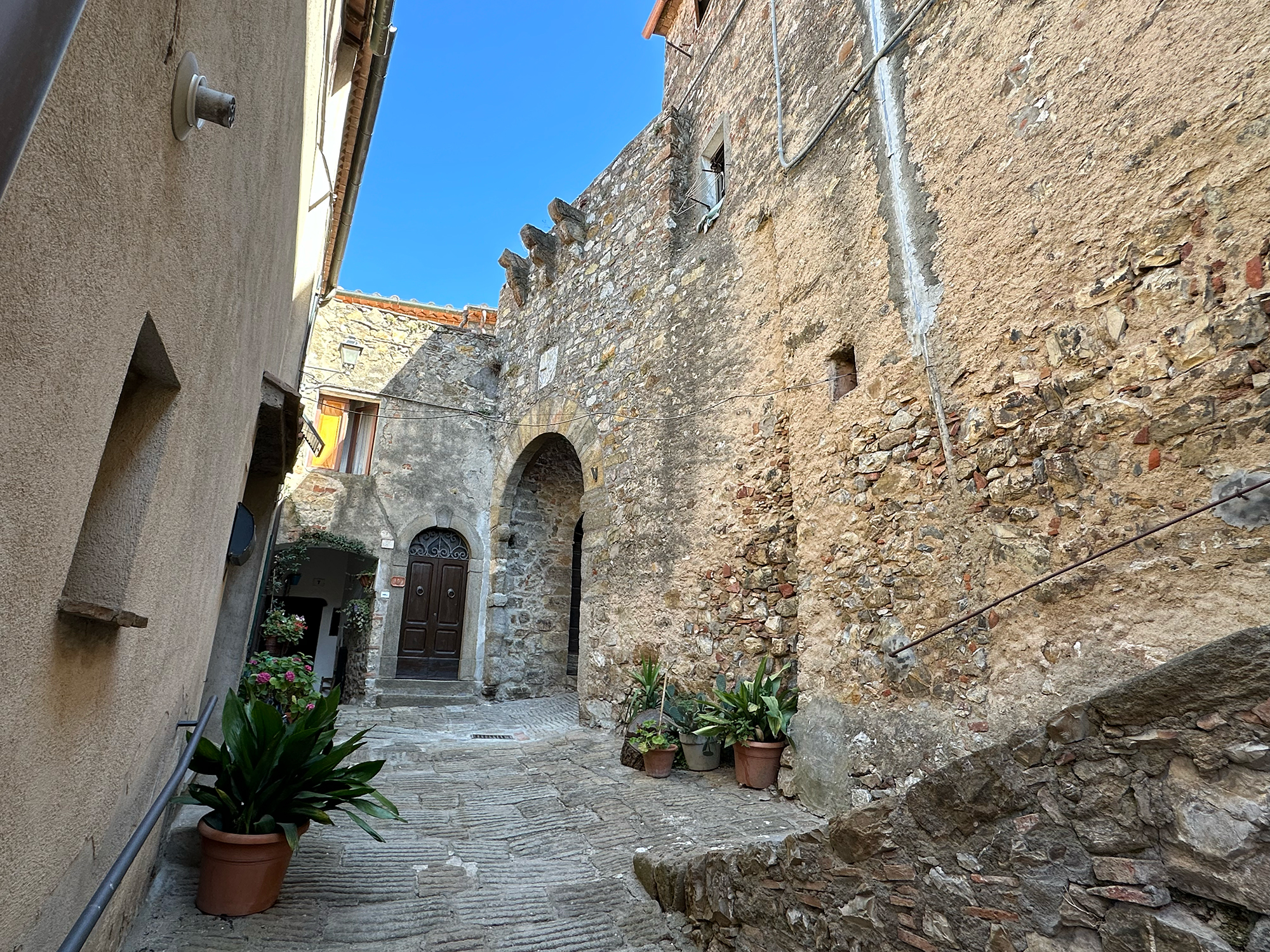
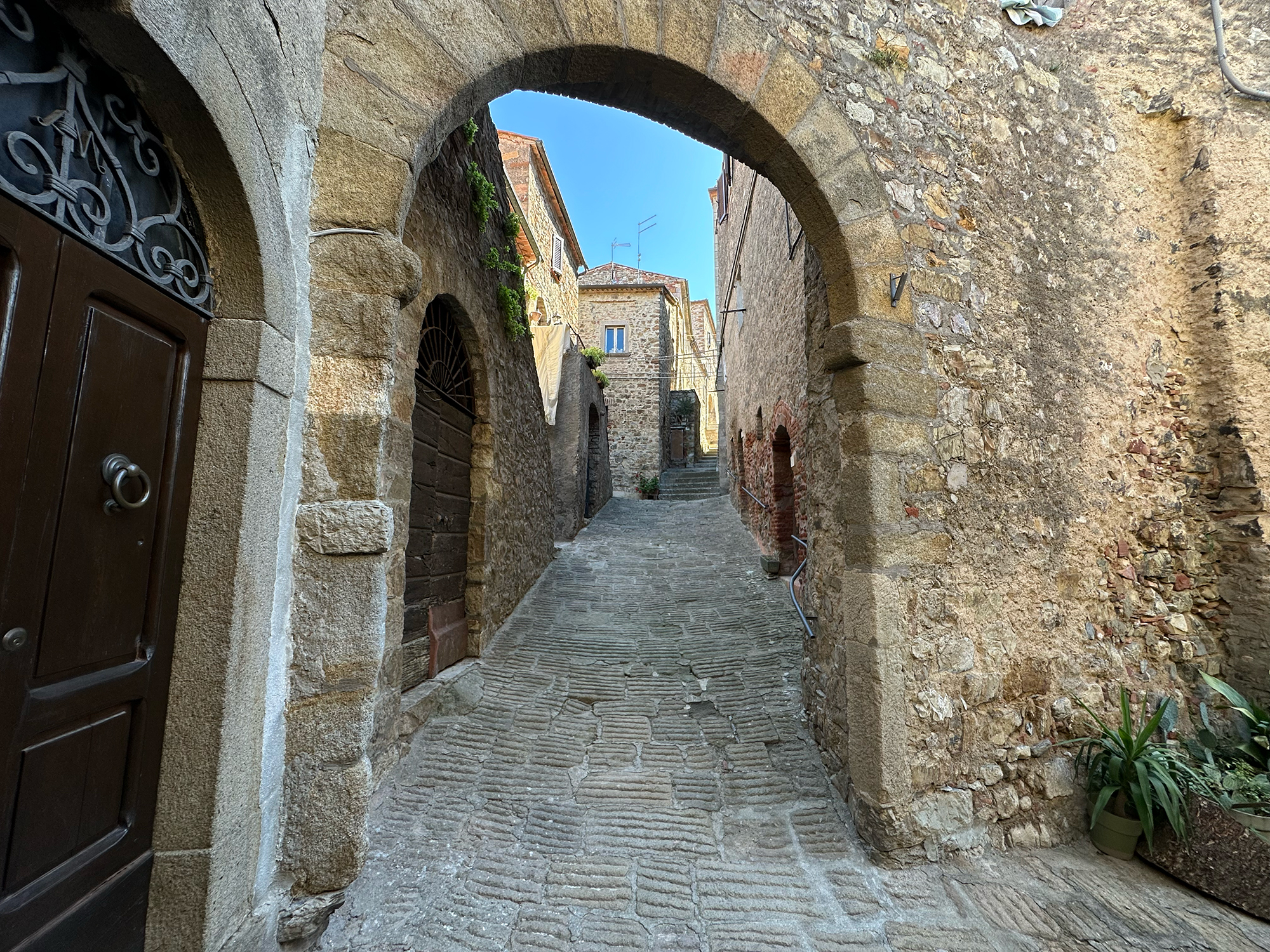
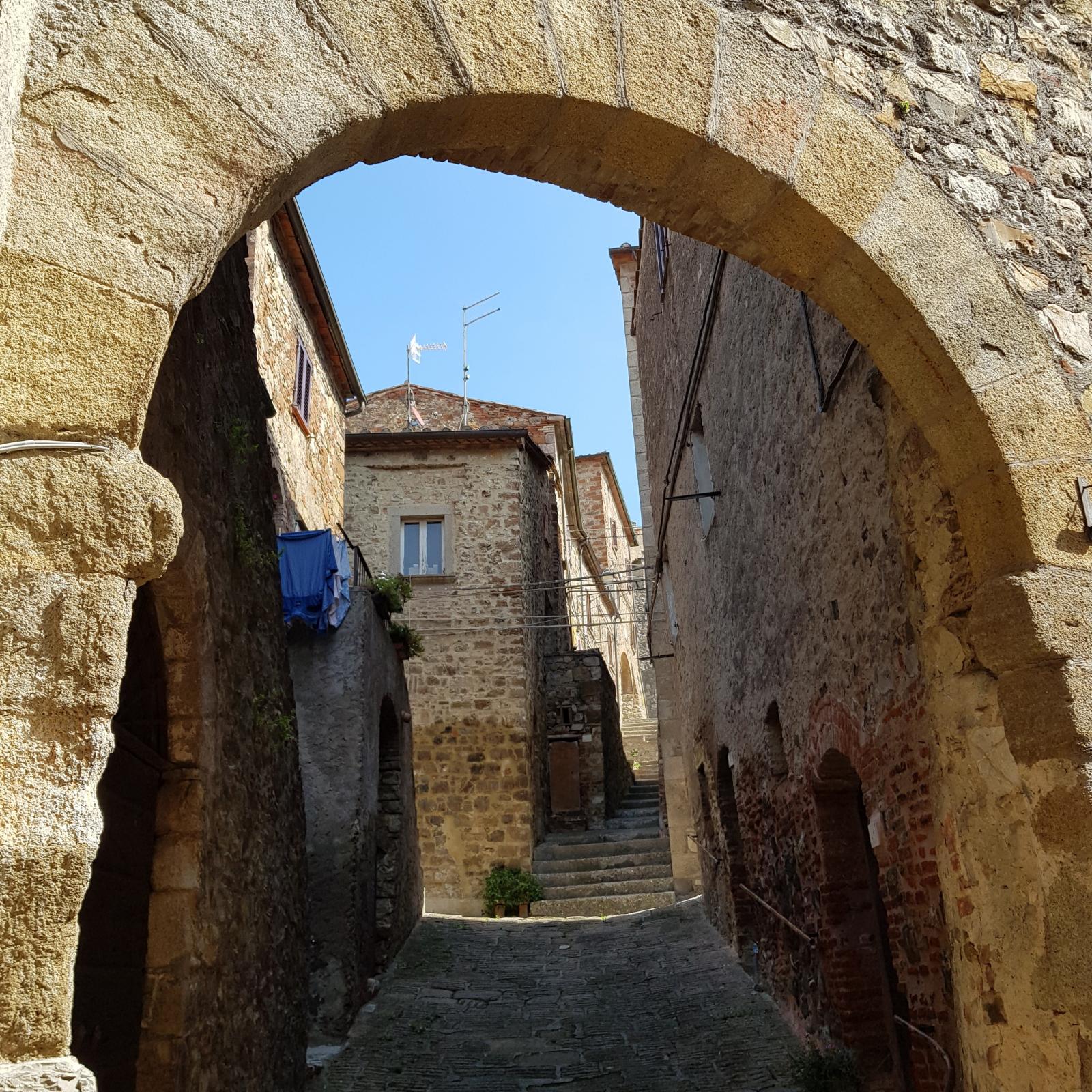










How to reach
The medieval village of Tatti is located at south-east of Prata, in the eastern part of the municipality of Massa Marittima.
History
The first news regarding Tatti is from the 9th century, although there may have been a Byzantine settlement of the 4th–5th century on the same site. Tatti was built for the purpose of counteracting the Longobards descent to the south and later used by the same Longobards for protecting the roads used for transportation of the salt extracted from Lake Prile.
The village developed in the upper Middle Ages as a possession of the bishops of Lucca, and later became the property of the Sestinga Abbey, to whom it remained in possession until the 13th century, when it passed under the control of the Aldobrandeschi family. In the 14th century, after being temporarily ruled by the Pannocchieschi family, it was sold to the noble family Malavolti of Siena, who reinforced the castle and its walls. For a short period, Tatti was called the “Rocca dei Malavolti”.
Tatti passed directly to Sienese rule, who managed to keep it up until 1555, when, losing the war against Florence, Cosimo I de’ Medici incorporated Tatti into the Grand Duchy of Tuscany. The surrounding walls of Tatti are still recognizable by following the way the land of the village lies, even if tracts of it are now replaced by houses.
In certain parts of the wall, a bastionated base is present. An arched gate supported by three travertine mantles still remains in the southern portion of the wall. At the highest part of the village rises the imposing Keep, or Rocca Aldobrandesca, made in sandstone, and its tower, today truncated, which together around a courtyard from which one enters by two large portals with Romanesque arches also in sandstone.
The Medieval church of San Sebastiano lies inside the walls and houses a 16th century wooden statue. Another Medieval church, Santa Maria Assunta is presented in a Neoclassic style after having undergone reconstruction in the 19th century. The church of Santissima Annuziata, also from the Medieval period, was completely restored in the last century.